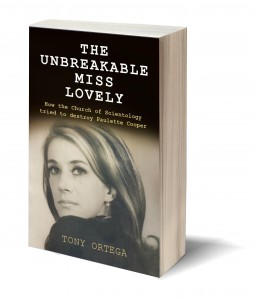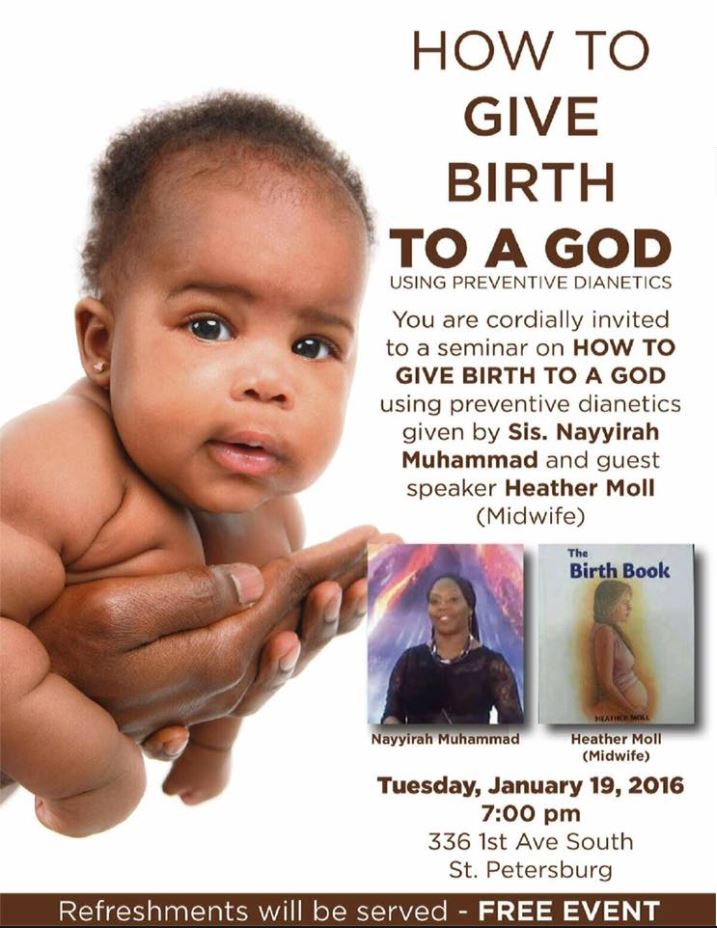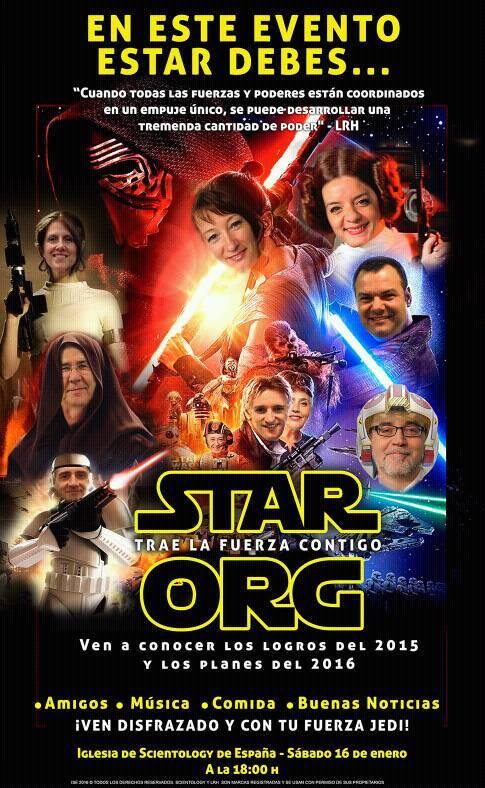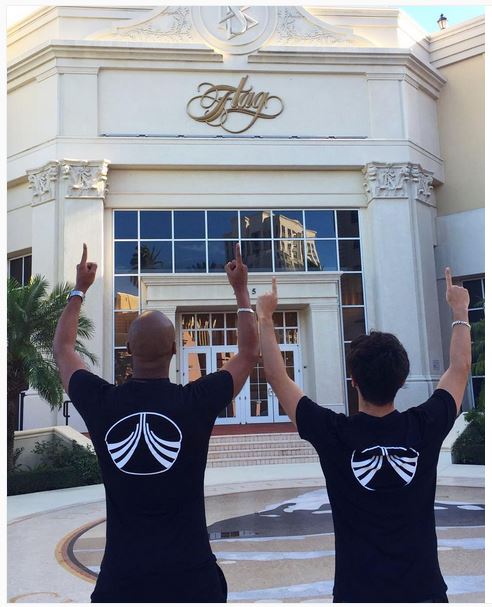 Jon Atack is the author of A Piece of Blue Sky, one of the very best books on L. Ron Hubbard and Scientology. He has a new edition of the book for sale, and for more than a year on Saturdays he helped us sift through the legends, myths, and contested facts about Scientology that tend to get hashed and rehashed in books, articles, and especially on the Internet. He was kind enough to send us a new post.
Jon Atack is the author of A Piece of Blue Sky, one of the very best books on L. Ron Hubbard and Scientology. He has a new edition of the book for sale, and for more than a year on Saturdays he helped us sift through the legends, myths, and contested facts about Scientology that tend to get hashed and rehashed in books, articles, and especially on the Internet. He was kind enough to send us a new post.
My dear friend Gerry Armstrong has recently taken me to task for suggesting that 99 percent of escapees from Scientology suffer from arrogance when they leave. I made my remark in the foreword to Chris Shelton’s new book and I stand by it (as well as my assertion that Chris showed humility in putting aside the arrogant notions of Scientology so quickly after he left).
It may not have been clear enough that I was speaking of the newly escaped, rather than castigating all former members (several hundred of whom I count as friends, most of them long past the embarrassing egotism of Scientology). Even the most casual reader of the comments at the Bunker will soon become aware that we are not an arrogant crowd for the most part (though I probably have my moments and beg my readers’ forgiveness).
So, let me make it clear: refugees from Scientology almost all still believe Hubbard’s formulation – at the point of their departure from the cult. They believe themselves demigods who can control others’ minds and matter through sheer force of will.
I spent nine years believing. I was never a live-in member, so I had a comparatively easy life (I even defected to art school for two years). Nonetheless, my belief did not shift for a single moment during those nine years. I was a true believer.
As a Scientologist, I read Cyril Vosper’s Mindbenders, Roy Wallis’s Road to Total Freedom and Christopher Evans’s Cults of Unreason, and, because I was able to rebut some of the content, did not accept the accuracy of the rest (the “psychs” call it “confirmation bias”, bless them). This is why I was so meticulous when writing Let’s sell these people A Piece of Blue Sky: I know that a true believer will pick the smallest nit and, finding even one slight error, will then declare the whole unfounded and untrue.
Stacy Young wrote the dead-agent pack to discredit Bent Corydon’s book, Messiah or Madman. I was profoundly gratified when she told me she could not find a single passage to dead-agent in my own tome. Blue Sky was written to satisfy nit-pickers. I am pleased that never-ins have found it useful, but it was principally designed to show former members Hubbard’s deceptions, and to highlight the atrocities of the cult. I even left the Tech for later, knowing that many people have to follow that “gradient scale” of understanding. These days, I’m far more direct, for which I hope you will forgive me.
Thirty years after leaving the cult, I am still a little embarrassed that as a young man I did not challenge anything in Scientology, especially as I have found so much to challenge, since, as the whole subject is mired in contradiction and mere opinion is offered as “science.”
I suffered from the typical arrogance of the escapee for some months. I believed myself a superhuman, even though, like every other “OT” I’ve met, I had no single demonstrable supernatural power (beyond a fervid imagination). Once in the newly-formed Independents, I had an e-meter check which confirmed that I had completed OT V (and, yes, the auditor was Flag trained and so was the supervisor, for any Standard Tech cynics in the audience).
Even though I had complained while still in the cult that OT III did not work, and had never quite bought into the idea that I was infested with body thetans, I still believed in Hubbard and was willing to believe that I was at fault for my disbelief. Then I started the VI course and found that although the e-meter had confirmed that I had no more body thetans, there were more to go. I left the Tech on that day. The “Bridge” quite evidently went nowhere, unless the drug-dazed labyrinth of Ron Hubbard’s mind was an actual destination.
I had the great good luck to have the friendship of Mitch Beedie at that time. He too was cautious in rejecting Scientology, but between us we managed to talk our way out. I dived into the documentation on Hubbard’s past that the legendary Michael Linn Shannon had dug out (following in the footsteps of James Phelan; Gerry’s discoveries were still under court seal), which showed that Hubbard’s claims of academic achievement and war heroism were utterly and entirely bogus. Meanwhile, Mitch culled swathes of statements from Hubbard books, revealing contradictions aplenty.
Eventually, I compared 21 biographies prepared by the Scientology organization and almost all copyrighted to Hubbard: no two were the same, so Hubbard was clearly a liar (unless he was speaking from parallel universes where he had actually met Blackfoot Indians, studied with eastern gurus, become a nuclear physicist and seen combat in war time. He did none of those things in this universe. There is no shadow of a doubt: His own writings prove it). Nonetheless, as with so many of us, it took me months to finally put aside belief in the convoluted and contradictory dogma of Scientology.
I first met Gerry when we were working on the child residence case usually known as the Latey case, in June 1984. By that time, I no longer believed (and neither did he). I had broken through the final barrier when I showed an OT II friend a copy of the OT III pack, which persuaded him to spend his money on a Ducati motorbike and leave those pesky body thetans well alone.
The spell was broken, the dark enchantment gone, and I was no longer in thrall to the man who believed himself both Maitreya and the Anti-Christ. Since then millions have survived that notorious South Park episode where Mr Cruise refuses to leave the closet. Death by pneumonia was just another lie to keep the phobia in place.
As a member, I had taken the famous Data Series Evaluator’s Course – the ultimate training in logic according to Hubbard. For the first time, I applied the system of “outpoints” and “pluspoints” to Scientology and found it wanting. Profoundly wanting. Next, I turned the Data Series on itself and found that it was riddled with outpoints. For instance, the Policy Letter that insists the Data Series be read in sequence is not at the beginning of that series but at number 50; nor is there any order of importance for the Data Series outpoints themselves (nor indeed for the vast compendium of Hubbard writings).
I ended my thralldom with a simple decision. I was at the hub of the UK Independent movement for some months, so I met or corresponded with hundreds of escapees, almost all of whom continued to believe. When challenged, they would tell me how they had determined the truthfulness of Hubbard and the usefulness of his so-called Technology, but their methods sounded unconvincing and not in the least scientific.
For instance, one old-timer who had joined up in the early fifties told me he’d laughed out loud when he perused the OT III pack, but was convinced when it “read” on his e-meter. I asked if he had ever doubted the adequacy of the e-meter and he had not. By this time, the mother cult was calling in all meters to be “silver-sealed,” but this recall was actually to replace the faulty carbon potentiometers that were the “tone arm” mechanism. These carbon pots were scraping dust into the meter, causing rock slams and other “false” reads, so the cult itself had admitted the inadequacy of the meter (and charged the members for the privilege of repair).
My simple decision was that, rather than using Scientology to evaluate Scientology, I would reject the lot and consider each tenet separately on its own merits. In that way, I could adopt whatever was useful and reject whatever was not. It was embarrassing to find that none of it proved useful – sure, there are a few maxims that might be true, but they all come from other sources, and, as Hubbard himself said, it is best to look to the original (he couldn’t help altering everything he touched, so often lost the value of the original, too. Take a look at his misinterpretation of positioning theory in the Marketing Series, for instance. He clearly misunderstands Reiss and Trout, while claiming to draw from them). So much else is simply wrong-headed or actually dangerous – like the Purification Rundown and OT III. People have died on the former and gone crazy on the latter to my certain knowledge.
The system that these maxims formed is actually constructed to enslave. There was certainly no science involved, as there were no experiments, no case studies (unless you accept the risible material in Have You Lived Before This Life or Dianetics Today), no attempt at an experimental design, no clinical studies and no controls: Just the pontifications of the most arrogant man who ever lived. The use of the same IQ tests before and after auditing was a farce, as we all typically improve on our second time through such tests, and that was all the evidence we were offered, beyond testimonials.
I had to learn how to doubt, and the key came when I realized that we had always and only been given one side of any story: Hubbard’s side. I determined to look for intelligent dissent to any point of view, and this has stood me in good stead. (And, hopefully, not made me too arrogant!) Of course, even in our modern world much is not scientifically resolved, so I delight in unresolved possibilities as well as understanding established by research.
One former member commented poignantly on the wonderful Hayakawa piece recently re-published here at the Bunker that he’d just had painful surgery to remove kidney stones caused by years of vitamin C overdoses, courtesy of received Scientology wisdom. A couple of years ago, my jaw dropped when a former member out for over three decades said he still took 10 grams of the stuff every day. I’m surprised he still has a stomach with such consumption of a strong acid.
I decided to find other sources for the ideas of Scientology, and Adele Davis’s out-dated books on nutrition were one starting point (here’s a recent discussion of her dangerous and unscientific ideas). I found a text by a professor of nutrition, which revealed that any excess of a water soluble vitamin will be excreted in the urine, which explained the slump experienced when mega-vitamins are halted – the body is still desperately trying to rid itself of the overdose.
Twenty-four year Scientologist Brown McKee testified at the Clearwater Hearings that as a physicist he knew that Hubbard was talking nonsense about physics, but was fascinated by his statements about Buddhism. I laughed out loud when I read this: As a Buddhist, I knew Hubbard was talking nonsense about Buddhism, but I was fascinated by his claims to scientific rigour.
I read popular texts on physics and soon understood that McKee was right. My copy of All About Radiation (the 1979 printing, copyright L. Ron Hubbard) claims on the flyleaf that Hubbard was “one of America’s first nuclear physicists.” His college grade sheets show that he failed a course in “atomic and molecular physics” and Hubbard admits as much in a must-hear lecture called Introduction to Dianetics (reissued in 2007; recorded 23 September 1950). This lecture also contradicts most of his later fabulisms. I was long puzzled by Hubbard’s assertion that you can transform the past. I came to realize that he used a long-existing technology to do this. It is most commonly known as lying.
On the subject of Maitreya (or Metteya) and Hubbard’s claim to be the last Buddha who will lead all of humanity to enlightenment in his own life-time: I wrote to the Pali Text Society within weeks of first encountering Scientology and was politely told that the claims of the red-headed final Buddha arising in the West 2,500 years after the Shakyamuni had no origin in Buddhism (the only significant text would be the Book of the Great Decease, my own reading of which confirms the opinion of the Pali Text Society).
At the marvellous Getting Clear seminar this past summer in Toronto, toxicologist Angela Harris deconstructed Hubbard’s claims for the Purification Rundown and mega-vitamin “therapy.” Such analysis renders Hubbard’s ideas utterly obsolete (which perhaps explains why Gerry was unable to achieve a nomination for the Nobel Prize for the Old Man of the Sea Org). His litany of guesses, inferences and untested opinions comes apart under scrutiny. For instance, Dr Harris pointed to Hubbard’s assertion that anyone who takes drugs will have nutritional deficiencies. As she said, this is easy enough to test, yet in almost 40 years, no Scientologist has bothered to suggest such simple testing: Everyone is treated the same on the great assembly line of Scientology. I still aver that we killed Scientology at Toronto. I do not believe that anyone could watch the whole seminar and still believe in Hubbard or his “Tech.” Jim Beverley now offers some sessions for free (and rumours about our profits are greatly exaggerated. I have not received a penny and doubt that I ever will. We may one day be able to pay the debts accrued in presenting the conference).
Back in the 70s, I became concerned when Hubbard attacked those who had taken LSD (about half of the Sea Org at the time) based on “two cases.” It hardly seemed scientific to call all who had taken the drug “stupid” based on such a small sample. (I was amused in later years to find that Hubbard had told at least two people that he had taken LSD himself!)
In real scientific circles the term “gold standard” is applied to a study of over 1,000 people. A few years after Hubbard’s pronouncement, Harvey Haber told me that he had been one of the researched pair: Hubbard had ordered a “folder error summary” of his folder alongside that of another slave who had annoyed him. The commonplace between the two was that they had taken LSD. Hubbard was telling the world just how annoyed he was with them. He had an “other intention,” so it seems.
Harvey was evidently not stupid: Quite the contrary. Hubbard was evidently not scientific, but he had caught hold of the trend in advertising and was well aware of the effect of authority on an impressionable public (“Any time anybody gets enough altitude he can be called a hypnotic operator, and what he says will act as hypnotic suggestion…” Hubbard lecture, Education and Dianetics, 11 November 1950). We believed him, because he was Ron and we trusted his honesty. And, as he so blithely said, “honesty is sanity.”
Robert Young, the actor who played Marcus Welby, MD, sold a mountain of Sanka decaffeinated coffee, in part because the audience associated him with science and rational thought. Hubbard was a huge fan of anything subliminal – witness his claim that the weird 1968 book covers (which he alleged were images from OT III) would allow any foreign Scientologist to evade the ban on entry into the UK. As he said, we should never believe a hypnotist.
One day, my friend Mitch brought home a copy of Oliver Sacks’s The Man Who Mistook His Wife for a Hat. For Scientologists, the brain is the final frontier. Hubbard dismissed the brain as a “switchboard” between the “thetan” and the two minds that he had discovered (both chock full with teeny mental image pictures – over a quadrillion years’ worth at 24 per second).
The implanted self-view given by Hubbard is usually retained long after departure from the mother cult. It is kept in place by phobia induction (as I said in the foreword that caused my friend Gerry such annoyance). Scientologists are repeatedly told that all that is wrong in the universe (not simply on our little garden planet) is the fault of the wily crew of “psychs.” Hubbard nonetheless credited psychiatrist William Alanson White as one of the very small group of “thinking men without whose speculations and observations the creation and construction of Dianetics would not have been possible” (Science of Survival), but, as I’ve said before, the man was a riot of contradictions, which bodes poorly for any “scientific” basis for his claims.
Mitch was delighted with Sacks’s book and I had no hesitation in reading it once he was done. By this time, we revelled in our naughty determination to be self-determined! For those who insist that these “psychs” are rampant materialists, devoid of any religious feeling and bent upon the enslavement of humanity through the use of rose perfume, let me point out that the editor of the Encyclopedia of the Human Brain, illustrious neuroscientist Vilyanur Ramachandran, tends to dedicate his books to Hindu gods and has no difficulty in citing Hindu texts that exemplify supposedly modern beliefs. The “psychs” are not as small-minded as Hubbard was.
Sacks’s book was a revelation for me. I did not go mad (as far as I can tell), nor did I feel a sudden urge to attend psychiatric conferences or shower money on psychiatrists. Instead, I marvelled at the beauty of this most complex of all organs. It was OK to think. It was OK to disagree with the hidebound simplistic dogma of an untutored, paranoid and self-obsessed narcissist. I was at last Clear of Scientology!
One of the notions espoused by Hubbard is that of “counter” and “other” intention. Hubbard’s intention for us ran exactly counter to his publicised claims. In 1946, Hubbard wrote a series of hypnotic self-affirmations (brought to us by Gerry Armstrong from Omar Garrison’s collection, and accepted as genuine in court by Scientology during the first Armstrong case, back in 1984). Among these affirmations is: “Men are your slaves.” Hubbard adds, “elemental spirits are your slaves” (so he was the overlord of your body thetans too).
Publicly, Hubbard proclaimed that the “star-high goal” – the intention – of Scientology is: “A civilization without insanity, without criminals and without war, where the able can prosper and honest beings can have rights…” This is in stark contrast to the real purpose: “Men are your slaves.”
But, then, is Scientology actually capable of making slaves? Hubbard gave a firm answer in the 1952 Philadelphia “Doctorate” Course: “We have ways here of making slaves.” Ten years later, he tried to sell his “brainwashing” techniques to the US government.
I aver that Scientology does indeed make slaves. Sea Org members forego their human rights and are kept in inhumane conditions in the attempt to create this “civilization…where able beings can prosper and honest beings can have rights.” Hubbard lived in opulent luxury while denying proper food, habitation, free time, social contact and even time with their children to his slaves, who, no matter how honest did not have rights in the world he created. Hubbard had Savile Row shirts and a 2,000-piece camera collection; Sea Org members were denied toilet paper in compliance with his order.
Scientology makes slaves by undermining critical thinking and inducing phobias that prohibit those who have been implanted from even considering information contrary to Hubbard’s claims.
I took my life in my hands to return to the fray (my family and I suffered 16 years of harassment the first time round, and it was truly devastating), because I saw that most victims of Scientology do not actually recover. Tony has somehow mesmerised me into continuing, but at least it is only part time since the Toronto seminar.
Here is the point, and excuse my meander in reaching it: Unless and until you have risen above the phobia and checked out what the “psychs” say, you are still a slave, and slavery leads to arrogant dismissal of relevant information. The phony elitism of the supposed Operating Thetan – the demigod who can push we mere humans and the whole universe about at will – is both phony and elitist, as I said in the foreword to Chris’s book.
I have no problem whatsoever with those who continue to believe after they have comprehended such concepts as Stockholm Syndrome, confirmation bias, Lifton’s criteria for thought reform, the fundamental attribution error and cognitive dissonance, but the failure to put Hubbard’s assertions into the broader context of researched scientific views is arrogant and completely lacking in humility.
For instance, cognitive dissonance has been called the most researched theory in the social sciences. There have been literally thousands of experiments testing the notion that we will reject even the best evidence if it is at odds with our beliefs. Curiously, the first significant test involved a guru who had her own live-in Scientology auditor, way back in the early 1950s (When Prophecy Fails, Festinger et al, 1956). Only those still mired in the opinions of Hubbard can reject unread and unconsidered the work of Lewin, Asch, Sherif, Milgram, Janis, Zimbardo, Lifton, Cialdini, Ofshe, Aranson, Pratkanis, Singer, Langone, Lalich, Hassan and the many others who have contributed not the enslavement of humanity, as Hubbard averred, but to our liberation. My own distillation of some of that wisdom was published just a few weeks ago under the title Opening Minds: The secret world of manipulation, undue influence and brainwashing. I was hugely gratified when a former member who left more than 30 years ago wrote to tell me that he at last understood what Hubbard had done to him. My essential concern now is the rampant abuses of the thousands of totalitarian, authoritarian, and deceptive groups in which human society abounds, and the book is the first act of the incipient Open Minds Foundation. We hope to make a difference.
I can make no claim to humility, but at least I know I should be careful of any belief in my own of superiority: I’m good at some things and dreadful at others. Most importantly, my four children still speak to me, and usually smile when I enter the room. I have long since come down to earth from the fabulous and utterly imaginary heights of the Operating Thetan state. Perhaps it is arrogant of me to think myself mostly recovered, but I hope not.
Let me also take time to thank Gerry and Caroline for their remarkable work, and to again support Chris Shelton’s attempt to deconstruct Scientology and liberate those still trapped inside it with his Scientology: A to Xenu. Bless us, every one!
— Jon Atack
——————–
Jason Nark on Scientology’s ‘Dark Tower’ in Philly
In 2012, philly.com staffer Jason Nark researched and wrote one of the best things published about Scientology leader David Miscavige and his Philadelphia/South Jersey roots. Today, Jason has a new piece about Scientology’s hopelessly idle “Ideal Org” project in that city, and it features a local businessman who recently left Scientology, David Braverman.
Philadelphia is one of numerous cities where, in 2007 and 2008, local church members were pressured to raise money to purchase historic buildings to become the new wave of “Ideal” orgs, or churches. But millions more was needed to renovate the projects, and by then the small local groups of participating members were tapped out.
In 2011, the church said the “Philadelphia/New Jersey area” had about 10,000 Scientologists. But Braverman estimates that 50 or fewer practicing Scientologists live in the area, and he believes the church isn’t having much luck recruiting and isn’t even trying.
So now, in Philadelphia and places like Chicago, Detroit, and elsewhere, Scientology is saddled with decaying buildings it isn’t doing anything with, a symbol of its dwindling status as an organization. “It was a catastrophically stupid idea,” Braverman says, and led him to leave the church.
And after Braverman spent 40 years in Scientology, and helped the building project by catering its fundraising events and giving about a million dollars over the length of his career, Scientology spokesman Karin Pouw calls him a “bigot” for expressing his disappointment.
“Every religion has its detractors. However, no religion is or should be defined by them. These typically are individuals who are afraid of something new or different that seeks to improve the world, which is the case with Scientology. Or they are motivated by hate, or even financial incentives to harass the church,” Pouw wrote. “The number of individuals in this category is minuscule when compared to all those worldwide who embrace the religion and the good Scientology does for the world. They are irrelevant to our historic growth.”
Nice one, Karin.
——————–
Derek Bloch tells his story
We know this has been posted a few times in the comments section, but we wanted as many people as possible to hear it.
——————–
Bonus photos from our tipsters
Um, W. T. F….
The Farce Awakens…
We ran around a pole for days, and all we got were these lousy T-shirts!
——————–
 Posted by Tony Ortega on January 16, 2016 at 07:00
Posted by Tony Ortega on January 16, 2016 at 07:00
E-mail tips and story ideas to tonyo94 AT gmail DOT com or follow us on Twitter. We post behind-the-scenes updates at our Facebook author page. After every new story we send out an alert to our e-mail list and our FB page.
Our book, The Unbreakable Miss Lovely: How the Church of Scientology tried to destroy Paulette Cooper, is on sale at Amazon in paperback and Kindle editions. We’ve posted photographs of Paulette and scenes from her life at a separate location. Reader Sookie put together a complete index. More information about the book, and our 2015 book tour, can also be found at the book’s dedicated page.
Learn about Scientology with our numerous series with experts…
BLOGGING DIANETICS: We read Scientology’s founding text cover to cover with the help of L.A. attorney and former church member Vance Woodward
UP THE BRIDGE: Claire Headley and Bruce Hines train us as Scientologists
GETTING OUR ETHICS IN: Jefferson Hawkins explains Scientology’s system of justice
SCIENTOLOGY MYTHBUSTING: Historian Jon Atack discusses key Scientology concepts
Other links: Shelly Miscavige, ten years gone | The Lisa McPherson story told in real time | The Cathriona White stories | The Leah Remini ‘Knowledge Reports’ | Hear audio of a Scientology excommunication | Scientology’s little day care of horrors | Whatever happened to Steve Fishman? | Felony charges for Scientology’s drug rehab scam | Why Scientology digs bomb-proof vaults in the desert | PZ Myers reads L. Ron Hubbard’s “A History of Man” | Scientology’s Master Spies | Scientology’s Private Dancer | The mystery of the richest Scientologist and his wayward sons | Scientology’s shocking mistreatment of the mentally ill | Scientology boasts about assistance from Google | The Underground Bunker’s Official Theme Song | The Underground Bunker FAQ
Our Guide to Alex Gibney’s film ‘Going Clear,’ and our pages about its principal figures…
Jason Beghe | Tom DeVocht | Sara Goldberg | Paul Haggis | Mark “Marty” Rathbun | Mike Rinder | Spanky Taylor | Hana Whitfield









